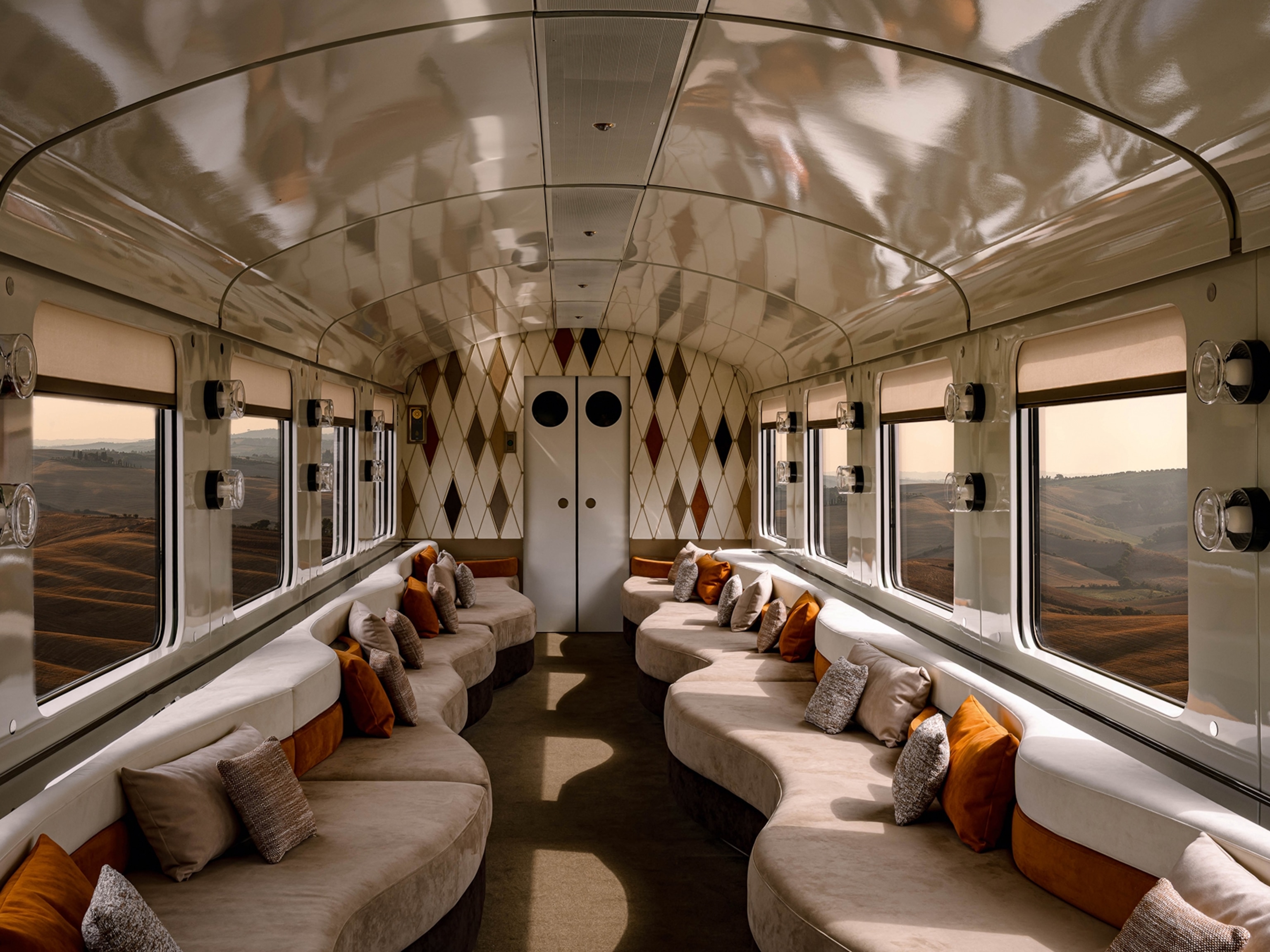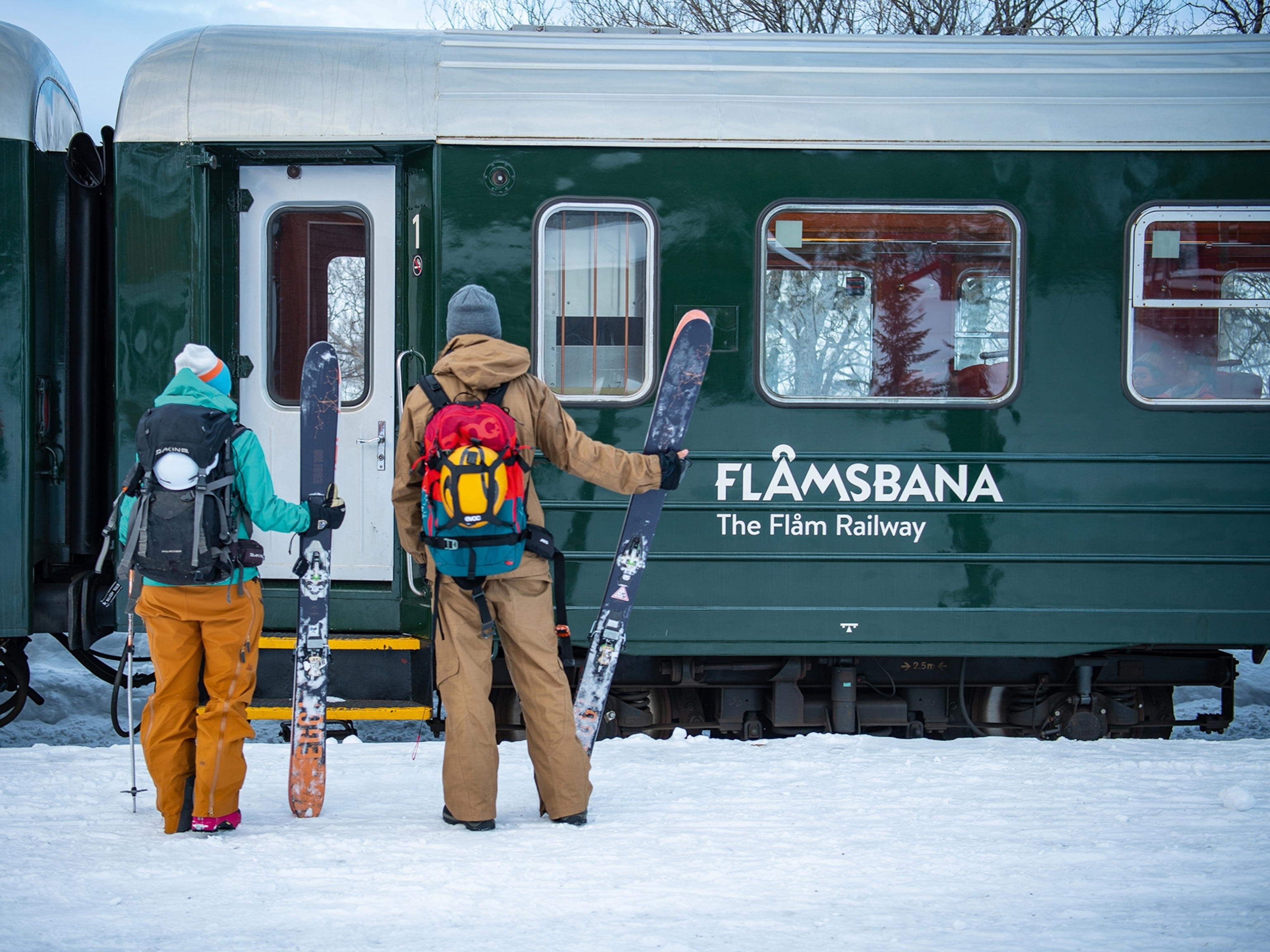Where to go and how to plan a family rail adventure around Europe
Family carriages, convenient rail passes and scenic routes are making European family breaks by train more appealing than ever.

Sleeping on a gently rolling train, the novelty of eating in the dining car and the excitement of waking to find a new country outside the window — plan a family trip by train and the journey itself becomes part of the fun.
Switching planes and cars for trains also has many practical benefits. Gone are the annoyances of lengthy airport queues, the need to wrestle your kids into seat belts and the inconvenience of arriving often miles away from your intended destination. Europe’s trains take you seamlessly from city centre to city centre, with space to stretch your legs, dedicated play carriages for younger kids and ever-changing views to entertain.
Crucially, as Europe continues to invest in rail as a lower-carbon alternative to flying, there are more routes — and more sleeper trains — than ever to choose from. London connects to Amsterdam, Brussels and Paris. But beyond that, it’s easy to reach Vienna, Berlin, Zurich, Budapest, Rome and even Zagreb in Croatia. Before long, Istanbul is in range — all of Europe is your oyster.
Four of the best European train routes for families
1. The Alps: Zurich to Tirano
Many Swiss (SBB) long-distance double-decker trains, such as Zurich to Chur, have a play area in the family coach, with energy-burning games and slides. Change at Chur for the Bernina Express; what you lose in onboard entertainment is more than compensated for by the views as the train climbs into the Alps. The snaking track follows the contours of glacial lakes, ragged gorges and towering mountains, with 196 bridges and 55 tunnels cutting corners en route to Tirano just over the border in Italy.
How to do it: SBB tickets covering both legs cost from €53 (£46) per person. You’ll also need a separate Bernina seat reservation from €20 (£18) each for prime panoramic carriage views.

2. The Med: Rome to Syracuse
Slip slowly out of Italy’s Eternal City after nightfall on the sleeper service to Sicily. Breakfast coincides with the train rolling onto the ferry across the Straits of Messina. Once in Sicily and back on the earthbound rails, the train runs down the eastern coast, skirting the volcanic cone of Mount Etna before passing flamingos idling in the trackside lagoons on the approach to the ancient coastal city of Syracuse.
How to do it: Book directly through ItaliaRail, which charges €41 (£36) for a berth in a four-person compartment or from €21 (£18) per person for a seat on the day train.
3. The Arctic: Helsinki to Rovaniemi
From Finland’s capital, it’s possible to travel by rail through the endless winter night to the edge of the Arctic Circle and the ‘official’ home town of Santa Claus. If conditions are right, you can glimpse the Northern Lights from the Santa Claus Express; if not, you still get to look out on snow-covered fields, lakes of ice and pine forests cutting serrated silhouettes against the darkened sky.
How to do it: Book tickets through Finnish Railways, from €49 (£43) per person including a sleeper berth.
4. The British Isles: London to Fort William
Breakfast in the plush restaurant car of this sleeper train, gazing out over the brooding Scottish Highland scenery, is a treat. From Fort William, you can set off on a hike up Ben Nevis, take a seal-spotting boat trip on Loch Linnhe or catch the Jacobite steam train, which curves over the 21-arch Glenfinnan Viaduct, made famous by its appearances in the Harry Potter films as part of the route the Hogwarts Express takes.
How to do it: Tickets can be booked through Caledonian Sleeper, from £240 for a family of four. Families should book connecting two-bed compartments.

How to plan and book family train trips in Europe
For a multi-destination trip, an Interrail pass makes travel much easier. There’s a range of ticket options depending on the number of countries you want to visit, how long the trip will be and how frequently you wish to travel. Once the pass has been bought, download Interrail’s Rail Planner app to reserve tickets across the network — you can travel as much as you like within the parameters of the pass. Interrail’s handy map shows connections between the most popular destinations, such as Paris to Milan and Munich to Prague.
When booking trains independently, without an Interrail pass, getting tickets early gives you the best rates and choice of dates. Many routes open bookings three months before travel, but it can vary. Sign up to the Rail Europe alert service to be notified when bookings for your intended journey have opened. The online rail guide, The Man in Seat 61, is also invaluable for plotting your way around the continent. It covers detailed itineraries, connection timings, links to booking sites, tips for getting the best deals, descriptions of trains and routes, and even hotel and dining options close to many stations.
Most operators offer free travel for children under a certain age, but the threshold can vary wildly, from under threes to under 15s. And free travel for children often means the child doesn’t get a seat or berth of their own. Rail Europe summarises which ages qualify for discounts in more popular countries, including Italy, France and Switzerland. If you want your young ones to have their own space — particularly in sleeper compartments where you may not want to be wedged in a bunk with your child overnight or want to ensure you’re not sharing your compartment with someone you don’t know — you’ll need to pay for the child’s ticket to secure them a bed.

How much will family train trips cost?
Interrail passes start at €258 (£224) for an adult for four days’ travel within a one-month period, rising to €1,202 (£1,045) for unlimited first-class trains across three months (some sleeper and high-speed routes, such as the Eurostar, still charge a supplement). Children aged 11 and under travel for free. ‘Youth’ tickets (ages 12-27) are 75% of the full adult fare.
Otherwise, prices depend on where you want to go, when you want to go, journey time and how far in advance you book. Expect to pay more than £150 if booking an individual night train for a family of four. Families as large as six can all fit in the same couchette compartment on most night trains. Consider that the night train can replace the cost of a hotel plus flights on the same route, and it’s not a bad deal. High-speed inter-city day trains are often similarly priced to sleeper trains, but taking slower day services will be cheaper: Prague to Budapest can be around £50 for a family of four on a slower day train, compared with £135 for the sleeper on the same route.
Generally, the farther east you travel, the cheaper it becomes, but there are some exceptional deals to be found all over Europe: an entire month riding Germany’s rails costs just €49 (£43) with the country’s monthly Deutschland Ticket, which covers all regional trains and most local public transport.
What to bring on a family train trip
Travelling light is crucial for families bouncing from city to city, because you’ll be carrying everything as you go. Rucksacks are best for when you’re on the move. Take only essentials and wash clothes as you go to avoid lugging unnecessary weight around. Air conditioning can be overzealous on sleeper services or non-existent on cheaper, regional routes, so it’s worth taking base layers for night trains, and consider handheld fans and misting sprays for local day trains in the summer, particularly in Southern Europe.
Load children up with their own small backpack to hold entertainment and essentials such as a tablet, book, water bottle, cuddly toy, pyjamas, toothbrush and wet wipes — or bring a Trunki suitcase that they can drag around behind them or ride on when they get tired. If you’ve got very young children and don’t want to share a bunk with them, it’s worth considering bringing a lightweight travel cot for them; there’s space on a sleeper compartment floor to set one up.
E-readers travel well, but for those who prefer a physical book the Adventures on Trains series is a good reading option for junior school age and up, and ideal bedtime story material for those slightly younger. Another idea is to pack a scrapbook or diary so kids can document their journey — this makes for a great project to occupy train hours during the trip, but also creates a memento of their travels to take home. Games such as Boggle and UNO satisfy most ages and are easy to play on small train tables, while suction toys that can be stuck to the window are a good way to amuse babies.
Visit local stores and markets to buy picnic supplies before boarding trains. Carry light, non-perishable snacks and it’s a good idea to bring a couple of small Tupperware containers for leftovers. Refillable water bottles are a must.







